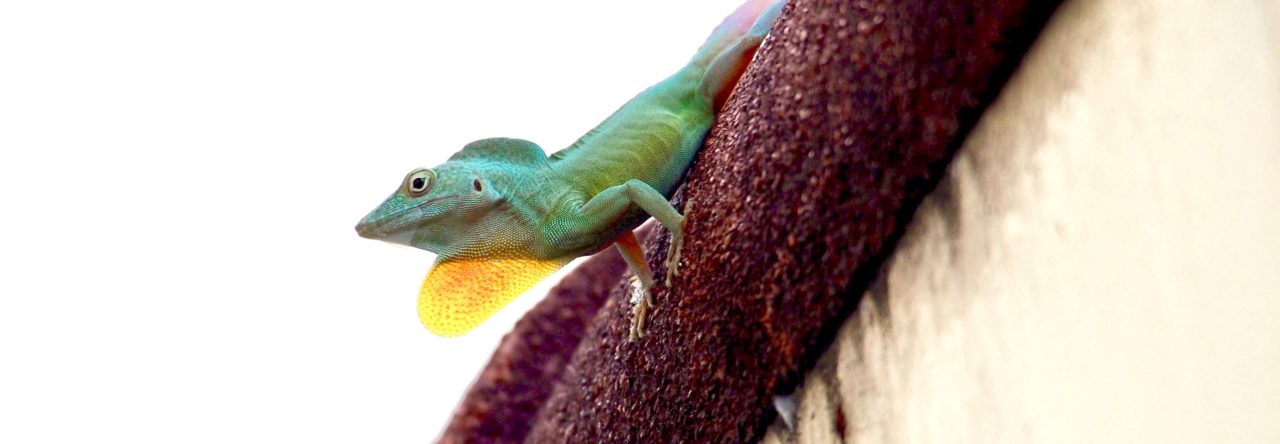
Dewlap morphology and colouration of Fan-throated lizards. Clade 1: A. Sarada darwini sp. nov., B. Sarada deccanensis comb. nov., C. Sitana superba sp. nov.; Clade 2: D. Sitana spinaecephalus sp. nov., E. Sitana laticeps sp. nov.; Clade 3: F. Sitana ponticeriana, G. Sitana visiri sp. nov., H. Sitana cf. bahiri. Scale bar = 10 mm
V. Deepak and his colleagues from five different institutions in India have published a revision of the systematics of fan-throated lizards in India. This work nicely expands on the project of figuring out the diversity of this clade of magnificent lizards, following the description of two new species from Sri Lanka last year.
I’ll be writing more about this paper and these lizards in weeks to come, but for now, here’s a figure from the paper, and below, the abstract!
Abstract
We revise the taxonomy of the agamid genus Sitana Cuvier, 1829, a widely distributed terrestrial lizard from the Indian subcontinent based on detailed comparative analyses of external morphology, osteology and molecular data. We sampled 81 locations spread over 160,000 km<sup>2</sup> in Peninsular India including type localities, which represented two known and five previously undescribed species. Based on general similarity in body shape and dewlap all species were hitherto identified as members of the genus Sitana. However, Sitana deccanensis and two other morphotypes, which are endemic to north Karnataka and Maharashtra in Peninsular India, are very distinct from the rest of the known members of the genus Sitana based on their external morphology and osteology. Moreover, members of this distinct morphological group were monophyletic in the molecular tree, and this clade (clade 1) was sister to two well-supported clades (2 and 3) constituting the rest of the Sitana. The interclade genetic divergence in mtDNA between clade 1 and clades 2 and 3 was 21-23%, whereas clade 2 and clade 3 exhibited 14- 16% genetic divergence. Thus, we designate a new genus name “Sarada” gen. nov. for species represented in Clade 1, which also includes the recently resurrected Sitana deccanensis. We describe two new species in Sarada gen. nov. and three new species in Sitana. Similarity in the dewlap of Sitana and Sarada gen. nov. is attributed to similar function (sexual signaling) and similarity in body shape is attributed to a similar terrestrial life style and/or common ancestry.




 The caption says: At first look this image may just look like an Amazon green anole (Anolis punctatus) climbing a tree; but look a little closer… there is a cryptically coloured cricket fooling the predatory eyes of the lizard.
The caption says: At first look this image may just look like an Amazon green anole (Anolis punctatus) climbing a tree; but look a little closer… there is a cryptically coloured cricket fooling the predatory eyes of the lizard. 



 I’m always amazed by the ability of anoles to survive–even prosper!–with dramatic injuries. How could a lizard get by missing half of a hind leg? How does it capture prey or escape predators? Display credibly? But they do.
I’m always amazed by the ability of anoles to survive–even prosper!–with dramatic injuries. How could a lizard get by missing half of a hind leg? How does it capture prey or escape predators? Display credibly? But they do. 


